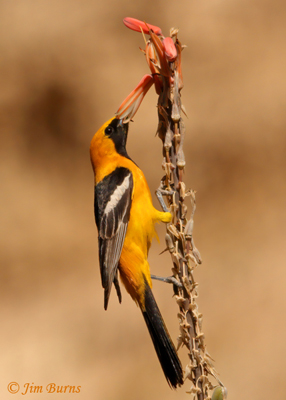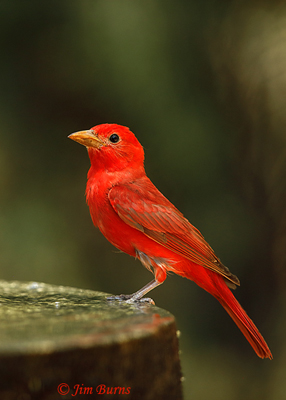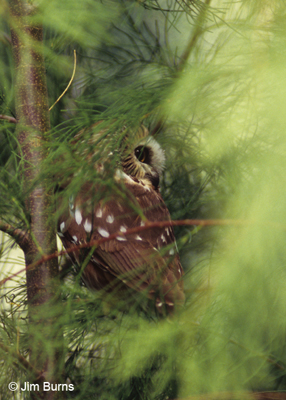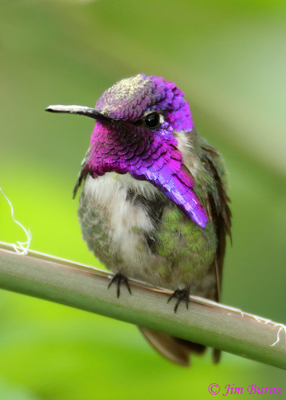Hooded Oriole |
Summer Tanager |
Fortunately, within our first month here, the person who was to become my beloved birding mentor, Pat Beall, suggested we check out BTA, back then a unit of the Arizona state park system. Over the ensuing years the birds and trails at BTA have provided respite and solace from real life, almost like stepping over a threshold from a black and white world of hurry and worry into a technicolor fantasy island of peace and calm.
Here’s another recently minted word to add to those like “comorbidity” and “asymptomatic” which you learned during the Covid-19 pandemic—“ornitherapy.” Ornitherapy, simply put, is birding to reduce stress. The term itself has been around since the 1970s, but the idea was popularized by Richard Louv in his 2005 book, Last Child in the Woods: Saving Our Children from Nature-Deficit Disorder. If Louv’s book was this century’s first watershed event for birdwatching, 2020’s pandemic was surely the second as our nation’s parks and recreation areas welcomed record numbers of visitors, and the outdoor equipment industry experienced unexpected growth.
Last spring I was surprised to round a bend at BTA and run into an old friend, a non-birder whom I’m sure didn’t know an eagle from a dove. I dragged her over to the Pine Loop to catch up as I monitored the Harris’s Hawk nest there, not a bird in sight. I had asked her what brought her to BTA because I knew it wasn’t the birds. As I suspected, she mentioned cabin fever and, unprompted, she said just being in nature seemed to have a soothing effect on her in these troubled times.
Suddenly one of the hawks left the nest and swooped directly over our heads. She was awestruck. I told her she may have just seen her “spark bird.” It seemed to me a quintessential BTA moment, and I’m guessing something similar may have happened for many BTA visitors these past twelve months. Seeking local peace and calm in nature because they were hesitant to hop on an airplane, they visited BTA, saw a bird just off trail they didn’t recognize, stopped to watch or listen, then looked at their watch to discover they had stood there unmoving, totally in the moment, mindful of nothing but the bird, for half an hour.
For birds and birders alike BTA is unique in central Arizona, a green oasis amidst the brown, high desert, replete with running water, a diversity of habitats which attracts birds of many families, scenic beauty especially along the High Trail and the Sonoran Desert Loop in the new in the Wallace Garden, and many secluded benches and cul-de-sacs. My friend asked which season at BTA is best for birding. I told her winter, spring, summer, and fall.
My personal favorite is winter with its influx of avian “snowbirds” from higher altitudes and latitudes. There’s no telling what may show up at BTA in winter, Lewis’s Woodpecker, Williamson’s Sapsucker, Rufous-backed Robin several consecutive years, both sooty and slate-colored forms of Fox Sparrow, and one year a Clark’s Nutcracker. Did I mention the Northern Saw-Whet Owl in the Tamarisk across from the Herb Garden one December?
Spring is gorgeous and glorious as color comes back to BTA in two forms, spectacular breeding species such as Hooded Oriole, Summer Tanager, and Yellow-breasted Chat, and of course the myriad flowering trees, bushes, and blossoms that attract and sustain these avian jewels with nectar and pollen. This is also the season when hummingbirds are suddenly everywhere and conspicuous, most notably Costa’s and Broad-billed.
Come summer, BTA provides a most welcome respite from The Valley’s heat because it is 1200 feet higher than Phoenix and it opens two hours earlier than usual at 6:00am (May through September). The dawn chorus this time of year includes Brown-throated Flycatcher, Bell’s Vireo, and Canyon Wren, and Ayer Lake and the arboretum’s six water features attract all the avian bathing beauties, thirsty and looking to cool off. This is also the season to hone your skills identifying juveniles of BTA’s nesting species, and you may get a glimpse of some of the less common, shyer birds like Pyrrhuloxia and Varied Bunting.
Fall is always a delight at BTA because it brings cooler temperatures, and its fruiting trees like Chinese Pistache and Myrtle, loaded at this season with berries, draw unexpected birds such as Crissal Thrasher, Cedar Waxing, and American Robin which may stop over on their migration trails. Remember fall migration is both altitudinal and latitudinal and brings old favorites like Hermit Thrush, Rufous-sided Towhees, and White-crowned Sparrow which often stay for the winter. It was in the fall that I once recorded seven wren species in one day.
BTA is a big place, but here are four areas birders should check out every time they go: The Grotto in the new Wallace Garden because it has running water; the Water Wall on the Main Trail across from the Cactus Garden for the same reason; the High Trail to watch for raptors, not just the Turkey Vultures, but Zone-tailed Hawks and Golden Eagles which may be riding updrafts in the area; and the Herb Garden which typically has the greatest bird diversity and numbers.
My most recent visit to Boyce Thompson Arboretum was on Earth Day. Maybe just a coincidence, but subconsciously probably not. Why not spend a day celebrating nature at a place which has eased our passage through the pandemic and introduced so many newcomers to the joy and wonder of reconnecting to the natural world? Though we periodically need to relearn it, the natural world has always been a component of our species’ deep genetic background. We must abandon the old frontier ethic of man against nature. Nature is a part of us, always has been and always will be. And though many are in denial or refuse to recognize it, we are dependent upon it. Ornitherapy speaks to a time and place from whence our species evolved. If the abnormalities of this pandemic world have you wrung out, you need to give it a try, and Boyce Thompson Arboretum is the best and closest place.
Northern Saw-whet Owl |
Costa's Hummingbird |



